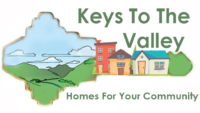Sleeping head to toe — and 3 to 6 feet apart — are among the recommendations being put in place as Vermont’s homeless shelters grapple with the threat of coronavirus to a vulnerable population.
Many shelters provide group meals and housing in congregate spaces, which contradicts guidlines from the Centers for Disease Control and Prevention about social distancing and self-isolation. Some have been running out of cleaning supplies and struggling to find their clients proper health care.
“We all run at capacity in our shelters,” said Kevin Pounds, executive director of ANEW Place, which operates two shelters in Chittenden County. “If someone has symptoms, how do we isolate them when there’s no space to isolate?”
Pounds said many of the people ANEW Place serves have undiagnosed conditions or other health issues that make them particularly vulnerable. No shelter users in the state have yet to be diagnosed with the coronavirus, according to information from the Vermont Health Department.
In an effort to curb the challenges shelters are facing, the Scott administration has created a COVID-19 homeless response team. The team — led by Sarah Phillips, director of the Office for Economic Opportunity — issued guidelines this morning about how shelters can best protect the homeless as the illness spreads.
Pounds and others praised the administration’s “proactive” response in their support for shelters across the state. Phillips hosted a webinar with shelter providers Monday to answer questions and hear concerns. In an interview, she said her team is determining how the Agency of Human Services can best support shelters, whether that’s through funding, supplies or manpower.
The next big challenge for Phillips and shelter leaders is providing access to health care for those in the shelter who present symptoms. Phillips said her team is working to construct congregate recovery centers — a halfway point where people can receive medical attention who may not need a bed in a hospital or emergency room.
Phillips is also suggesting that communities construct their own COVID-19 homeless response team. That way locals can best identify where a congregate recovery center could be maintained and organize outreach to those living on the streets and encampments.
“Folks are concerned about how to support people who are homeless,” Phillips said. “We live in a very caring Vermont community.”
As cleaning supplies become more scarce for all Vermonters, leaders are concerned about the need for supplies to prevent germ transmission among their larger groups of users. Rita Markley, executive director of the Committee on Temporary Shelters, said her shelter’s cleaning supplies have been backordered and that they’re running out.
Andrea Hurley, a care specialist with the Vermont Coalition to End Homelessness, said she’s heard from other shelters across the state that they’re also running low on supplies. She said the coalition will be posting a list of shelters in need of donations to its website soon, so community members can help.
And while many are fearful about the growing pandemic, Markley sounded reassured Vermont’s civic nature would prevail.
“Thank God we’re in Vermont,” Markley said. “Because I do think we’re uniquely responsive.”

